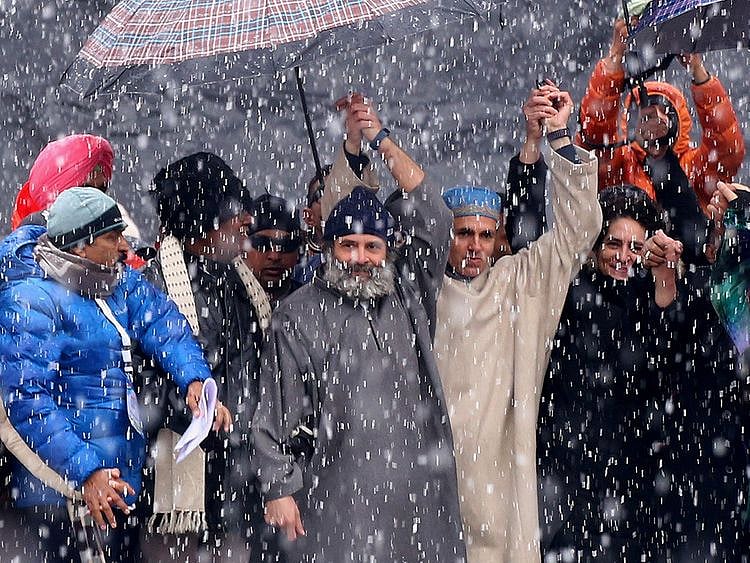How Rahul Gandhi turned the corner with Bharat Jodo Yatra
The pan-India march was a big hit but the Congress needs to up its election game now

When Rahul Gandhi’s Bharat Jodo Yatra entered the Kashmir Valley last week, it was an incredible sight to see. Braving the ice cold temperatures and tight security, a large number of ordinary Kashmiris came out in support.
It was terrific to see Rahul Gandhi unfurl the national flag at Lal Chowk in Srinagar. The enthusiasm in Kashmir surprised even the Congress.
Starting from Kanyakumari in September 2022, the Bharat Jodo Yatra covered around 3500 kilometres in 150 days. First the positives.
Motivated party cadre
Even the Congress’ staunchest critics would admit it has been a remarkable feat for Rahul Gandhi and the Congress, not just because of the physical challenges involved, but also the way it has motivated the party cadre.
The messaging of uniting the country, of tolerance and love is a message no citizen can argue with. And in these fractured times, it is more than welcome.
Despite a lukewarm media response, which is to be expected at a time when most of the mainstream media has become pro establishment, the yatra received a pretty good response in several places.
Even in Haryana and UP in the north. It brought in a new energy to the Congress which has been down and out electorally for years now.
The yatra has also changed Rahul Gandhi’s image of being a part-time, drawing room politician. By hitting the streets and taking up issues that should matter most to people — like jobs, prices, harmony — Rahul has proved that he does indeed have it in him.
Ideologically committed leader
He has come across as a leader who is ideologically committed to what he believes in and that BJP IT cell’s campaign to discredit him as a “pappu “ is long gone. Rahul Gandhi comes across as sincere and basically a nice guy.
But the question is: Do nice guys win elections? The Congress has maintained the Bharat Jodo Yatra was not about electoral wins, a silly argument for a political party to make.
After all, winning elections IS important and what political parties are supposed to do. The Congress is not an NGO and if they seek to change the country, they need the hunger to win elections and come back to power.
That is where the Congress is still weak. In the midst of the yatra, the party gave up on the Gujarat campaign with Rahul Gandhi only going there for one day. The result was the party’s worst ever performance in the state. The silver lining for the Congress was the win in Himachal. But the party needs to do well electorally in order to implement any of the changes it seeks.
Only pan-India opposition party
Congress is still the only pan India opposition party to take on the BJP. It’s the primary opposition in 12 states and in a direct contest with the BJP in 7 states which account for more than 100 Lok Sabha seats.
None of the regional parties can do it alone at the moment, none even AAP, which is cutting into Congress votes wherever it goes. While the AAP has expanded its footprint, remember it only won one Lok Sabha seat in 2019. They have a long way to go.
Any meaningful opposition alliance against the BJP therefore needs the Congress to be a part of it. It’s another matter that several regional forces see the Congress as a burden, and would rather forge a front without it. The success of a non-Congress non-BJP front is dim.
The Congress needs to address many issues. Internal factionalism is one of the biggest challenges it faces. Such as the Gehlot- Pilot fight in Rajasthan, where elections are due later this year.
This could cost them the state. Karnataka has elections coming up in May where again the party is facing internal rumblings between the opposing camps of former Chief Minister Siddaramaiah and DK Shivakumar. In Kerala, Shashi Tharoor has been locked in a battle with local leaders for months now; while several other senior leaders remain disgruntled.
This is where the party must get its house in order. And be pragmatic about electoral alliances. The yatra was a good start. Now it must convert this into votes.
Network Links
GN StoreDownload our app
© Al Nisr Publishing LLC 2025. All rights reserved.